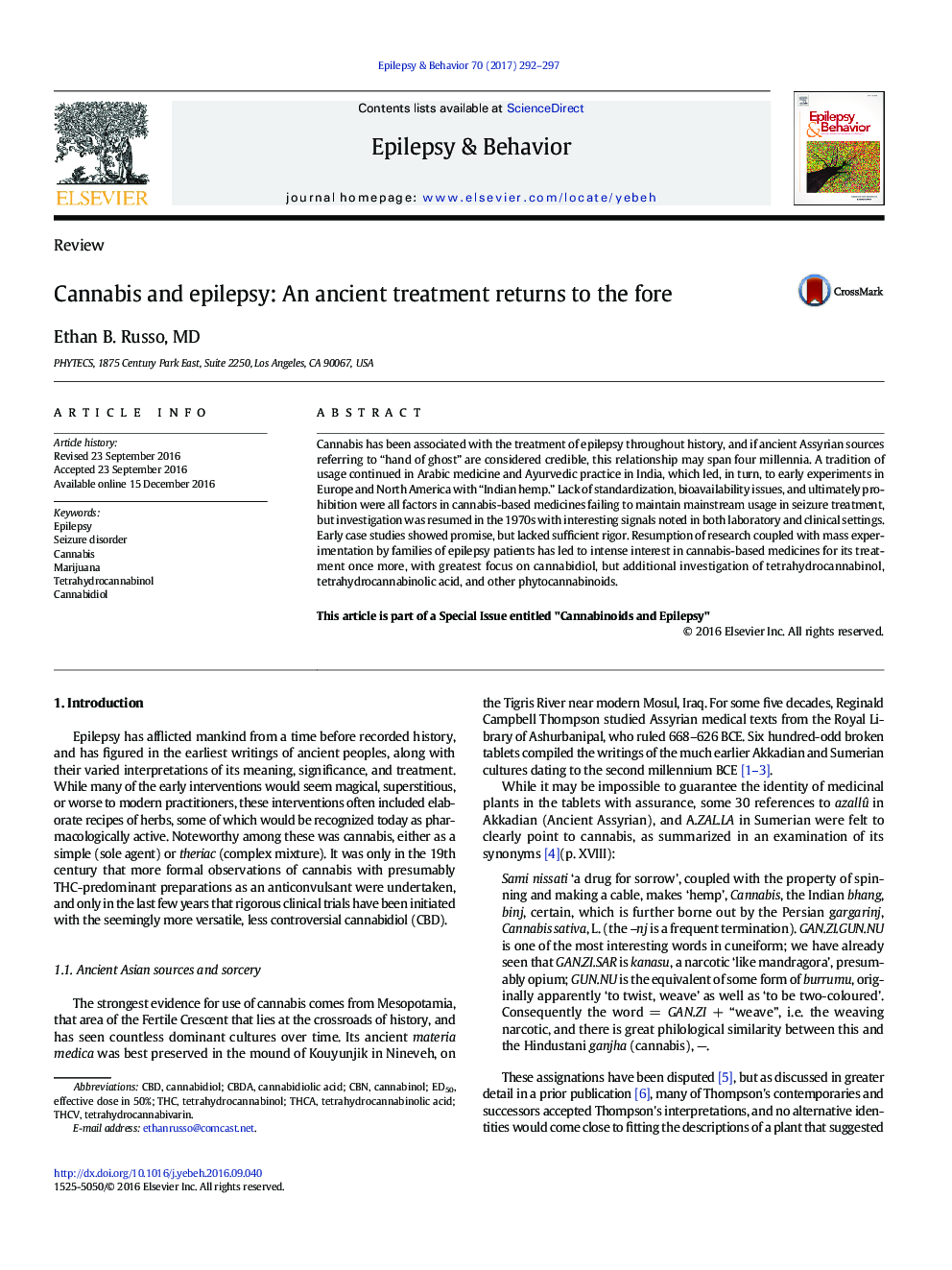| کد مقاله | کد نشریه | سال انتشار | مقاله انگلیسی | نسخه تمام متن |
|---|---|---|---|---|
| 5627985 | 1579822 | 2017 | 6 صفحه PDF | دانلود رایگان |
- Cannabis has an ancient history as an anticonvulsant in the Middle East and India.
- Nineteenth-century neurologists used THC-predominant cannabis for seizures with variable results.
- Patient anecdotes and small studies as an anticonvulsant emerged again in the 1970s.
- Recent clinical trials of cannabidiol support efficacy in intractable seizure syndromes.
Cannabis has been associated with the treatment of epilepsy throughout history, and if ancient Assyrian sources referring to “hand of ghost” are considered credible, this relationship may span four millennia. A tradition of usage continued in Arabic medicine and Ayurvedic practice in India, which led, in turn, to early experiments in Europe and North America with “Indian hemp.” Lack of standardization, bioavailability issues, and ultimately prohibition were all factors in cannabis-based medicines failing to maintain mainstream usage in seizure treatment, but investigation was resumed in the 1970s with interesting signals noted in both laboratory and clinical settings. Early case studies showed promise, but lacked sufficient rigor. Resumption of research coupled with mass experimentation by families of epilepsy patients has led to intense interest in cannabis-based medicines for its treatment once more, with greatest focus on cannabidiol, but additional investigation of tetrahydrocannabinol, tetrahydrocannabinolic acid, and other phytocannabinoids.This article is part of a Special Issue entitled "Cannabinoids and Epilepsy"
Journal: Epilepsy & Behavior - Volume 70, Part B, May 2017, Pages 292-297
